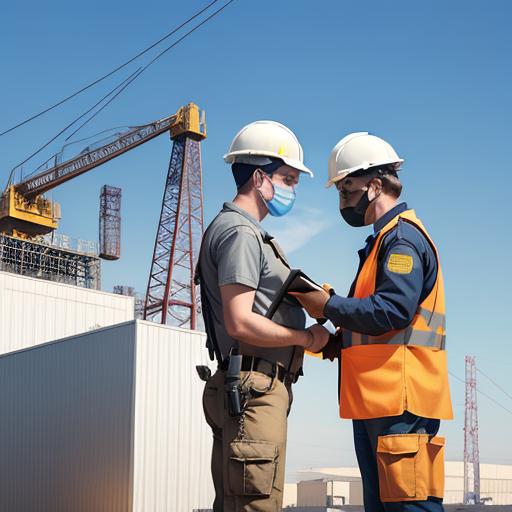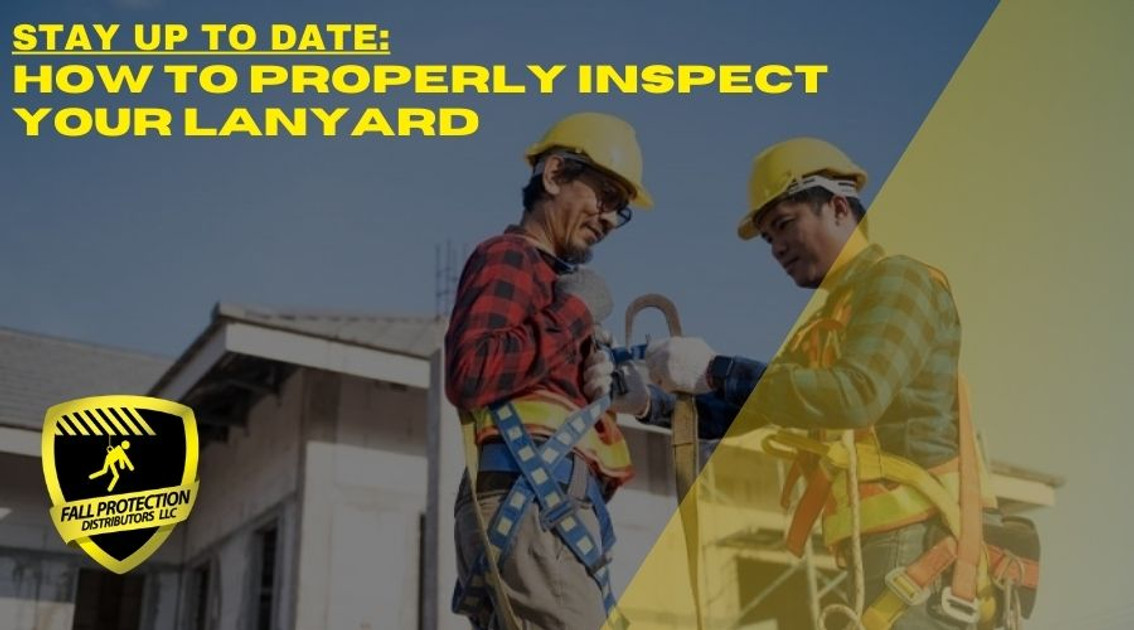Inspect Your Lanyard
Posted by Howie Scarboro - CEO Fall Protection Distributors, LLC on Dec 12th 2023
Inspecting your lanyard is extremely important to ensure your safety while working at heights. In this blog post we will go through a step-by-step process of examining your lanyard to identify any issues or damage. By following these guidelines, you can guarantee that your lanyard is in working condition and will effectively protect you in the event of a fall.
If you need to purchase a quality lanyards, we carry a full line of single and double leg versions. We also stock a shock absorbing lanyard with rope grab and 50' vertical lifeline.
Check out this helpful video from Falltech on the correct procedure.
Different Types of Shock Absorbing Lanyards
There are two kinds of shock-absorbing lanyards: those with a shock pack and those without. When inspecting your lanyard, it's essential to know which type you have since the inspection procedure might vary slightly.
Lanyards with Shock Packs
If your lanyard includes a shock pack, start by checking the stitching on both ends. Make sure there's no torn stitching. Moreover, if your shock pack lanyard has a view pack window on the label cover, you can open it to inspect the webbing. Look for any signs of tearing or misshapen webbing. If you notice any damage, remove the lanyard from service immediately.
Internal Lanyards
Lanyards without a shock pack are commonly referred to as lanyards. In these types of lanyards, the shock absorption mechanism is integrated internally, resulting in bunched-up webbing.
To examine the lanyard, locate the warning label for the indicator within the folds of the webbing. Gently separate the folds to read the label. If you can't decipher any of the words, it suggests that the lanyard might have experienced a fall and should be taken out of service.

Inspection of Web Lanyards
When inspecting web lanyards, thoroughly check both sides of the webbing. Look for any holes, tears, abrasions, discoloration, or fraying. It is crucial to confirm that there are no holes or tears by tugging on the webbing. If you come across any holes or tears, remove the lanyard from service. Similarly, if there are abrasions, discoloration or fraying affecting more than 10% of the webbing surface area, it must also be taken out of service.
To get a view of the webbings surface condition, bend it into an inverted U shape. This will assist in identifying any spots or broken fibers. Run your hands along the webbing to detect any areas that could indicate heat stress. Furthermore, inspecting the stitching is vital to ensuring that there are no exposed threads. Check if there is a wear patch on the lanyard, as it provides durability. If there is no wear patch present, remove and replace the lanyard accordingly.
Inspecting Rope Lanyards
To inspect rope lanyards, hold the rope with your hands. Rotate it while examining the strands from end to end. Look out for any indications of damage, deterioration, or chemical corrosion. Check for fiber cuts, nicks, broken or worn-out fibers, overall deterioration, UV damage or signs of impact. Additionally, be attentive to any modifications like knots tied into the rope or excessive writing on it. If you notice any of these issues during inspection, it is recommended to take the lanyard out of service.
When examining the rope, physical touch is equally important. Feel for signs of heat damage such as burnt, charred or brittle fibers or areas that are hard and shiny. Synthetic fiber ropes tend to lose strength when exposed to temperatures. If you suspect heat damage, refer to the manufacturer's specifications and instructions for that type of rope fiber. While running your hand along the ropes length, ensure that its diameter remains consistent throughout. If you notice a variation exceeding 5%, it is advisable to remove the lanyard from service.
Check the rope for any signs of hockle formation. This refers to when a rope unravels due to turning in one direction. If you find that the rope is loose or shows hockle formation during inspection. should be taken out of service.
Inspect the thimbles at the end of the lanyard to ensure that they are not loose, damaged or missing. Additionally, make sure that the splices are properly secured to prevent any unraveling. Verify that the tape and shrink wrap remain intact and free from any tears.
Mechanism Inspection
It is also important to inspect the mechanisms of your lanyard, such as the locking hook, rebar hook or carabiner. Here are the steps to follow when checking these mechanisms;
Double Locking Snap Hook
Begin by examining the metal for any cracks or bends. Look out for discoloration, as it could indicate exposure to chemicals. If you come across any cracks, bends or discoloration, do not use the lanyard.
Open and close the hook a few times to ensure it moves freely without getting stuck. Make sure that it closes properly with its nose piece flat against the tongue. If it fails this test, take it out of service. Press your thumb against the backside of rivets to confirm they are securely in place.
Carabiner
Open, twist, and pull open. Let go of the carabiner to check its functionality. Verify that it closes smoothly without any issues.
Make sure to repeat this process a few times for proper function.
Once you've mastered the art of examining your lanyard, it's crucial to apply the same level of scrutiny to all your personal fall arrest gear. Remember, regular inspections are key to maintaining your safety when working at heights. If you have any queries or require further information, please feel free to reach out to us or visit our website at www.StandingSeamRoofAnchor.com for information.

